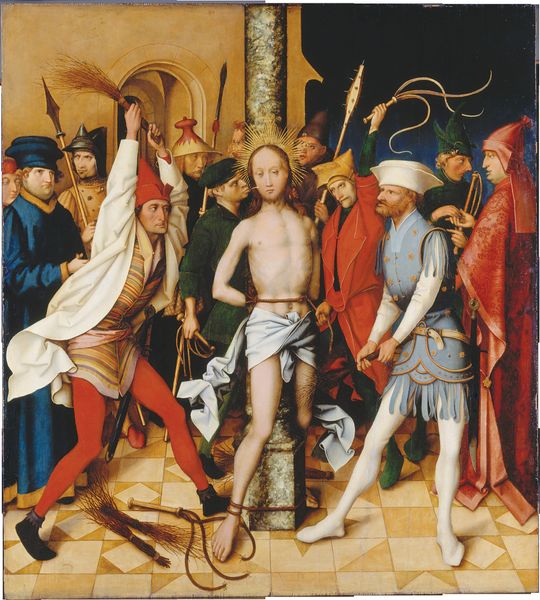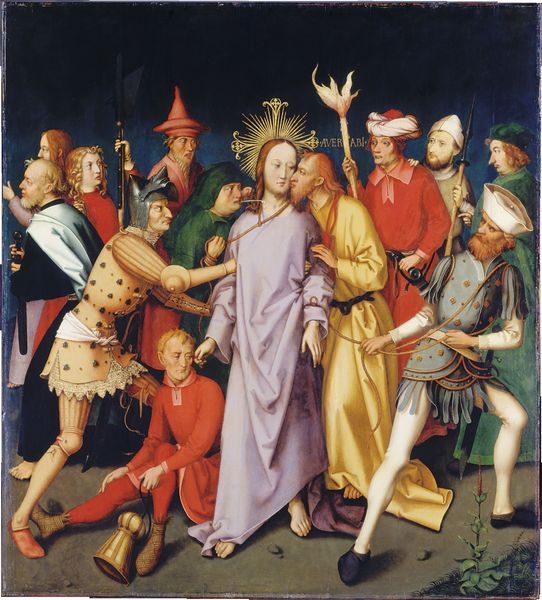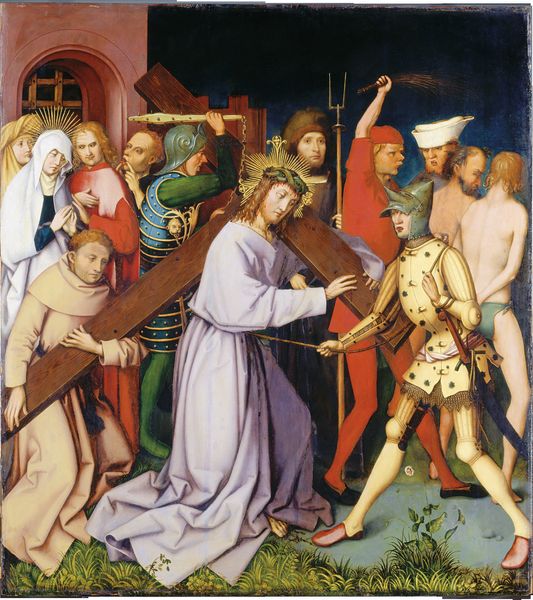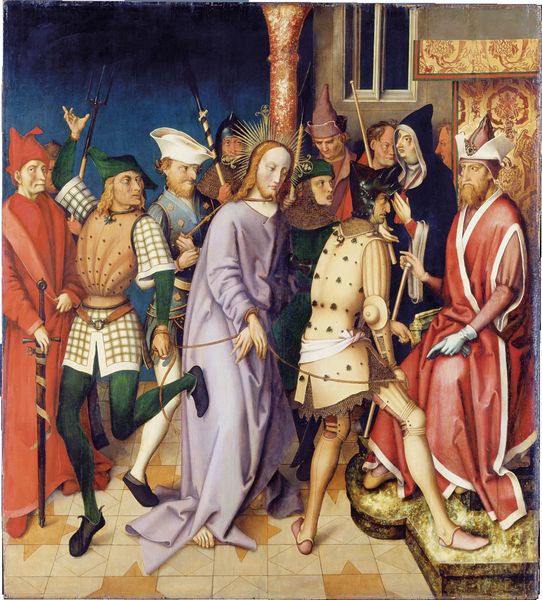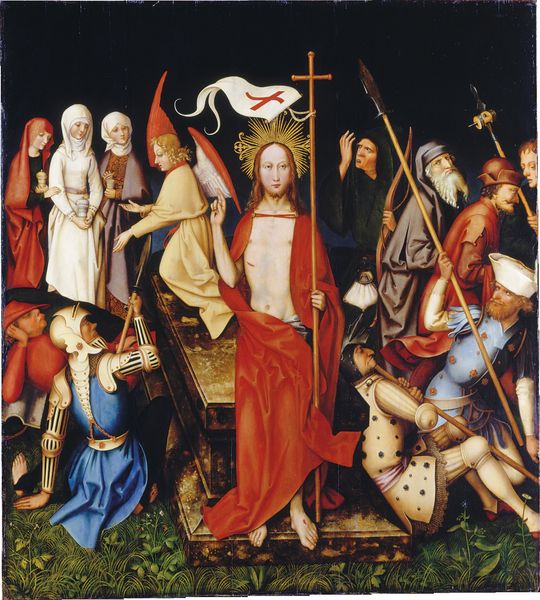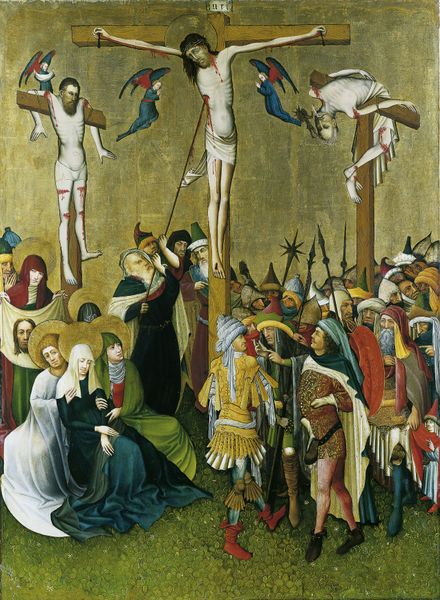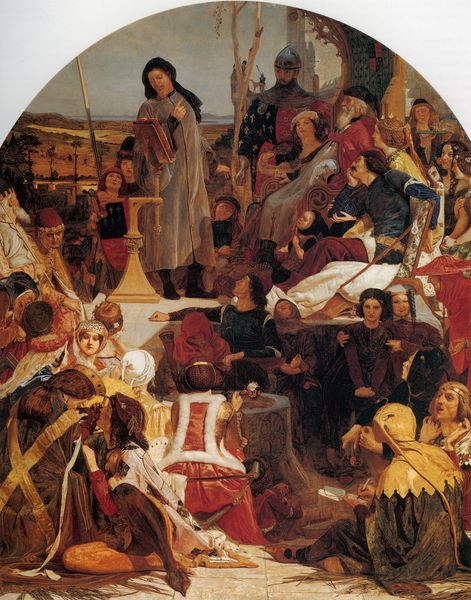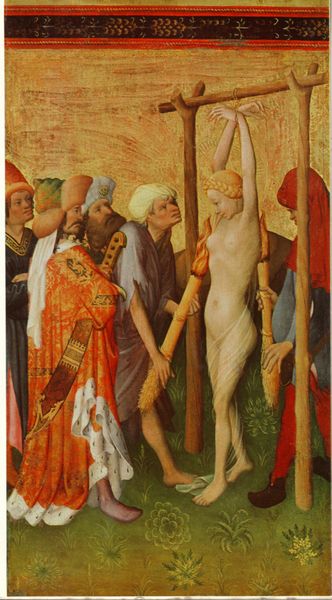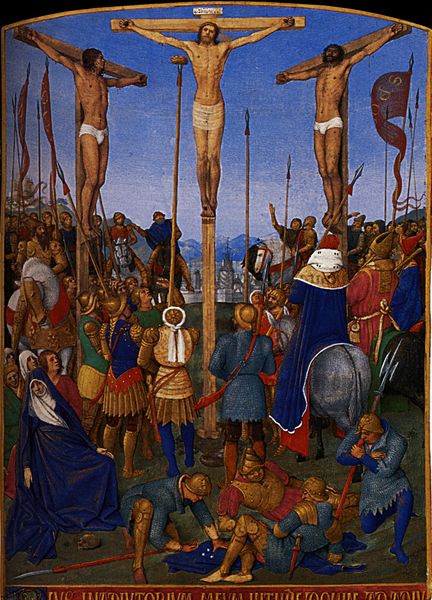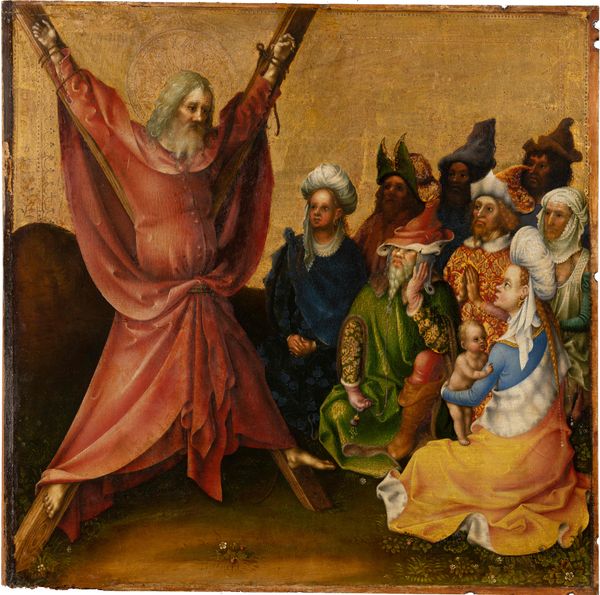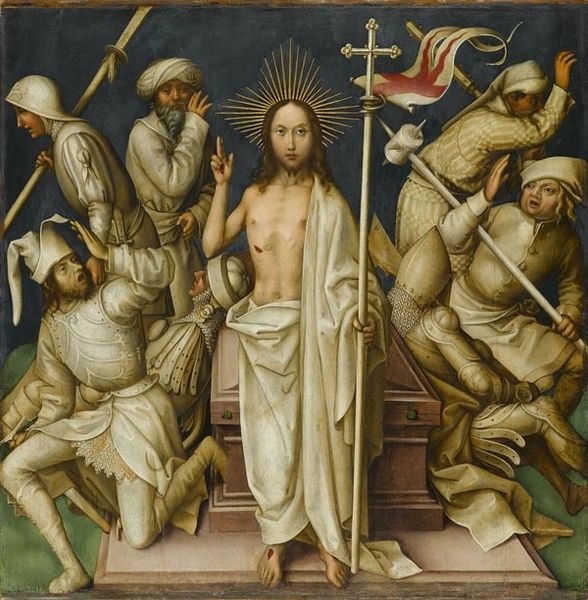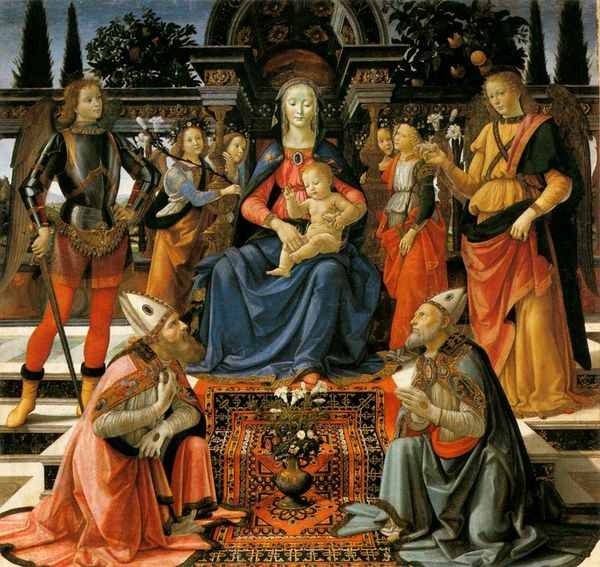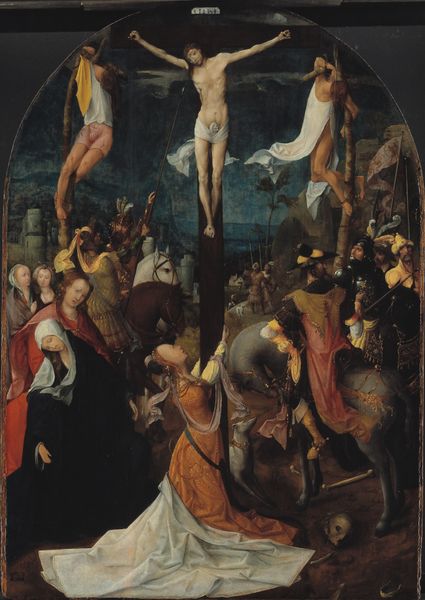
painting, oil-paint
#
portrait
#
painting
#
oil-paint
#
figuration
#
11_renaissance
#
oil painting
#
history-painting
#
early-renaissance
#
portrait art
Dimensions: 166.5 x 150.7 cm
Copyright: Public Domain
Editor: Here we have Hans Holbein the Elder’s “Christ Crowned with Thorns,” an oil on wood panel created around 1501. I find it striking how still and central Christ is, despite the chaos swirling around him. How do you interpret the symbolism in this piece, especially the contrast between Christ and his tormentors? Curator: Notice the placement of the figures and the objects they wield, each playing a crucial role in conveying emotional and cultural narratives. Holbein has created an array of cultural references, hasn't he? Christ is the symbolic focus, but surrounded by other icons and actors in the unfolding story of divine martyrdom. What kind of visual language and rhetorical gestures are repeated by those who enact this abuse? Editor: Well, their gestures are aggressive – sticks raised, sneering faces – it's very pointed, quite literally. But what's particularly interesting is how much their clothing varies, which strikes me as odd. What's the significance of such a variety of...fashion statements? Curator: Indeed. The array of garments helps identify the specific time and place in which the symbolic drama is being enacted. These historical costume references position viewers within a familiar symbolic landscape. Each article alludes to historical, religious, and psychological continuity; Holbein is actively engaging with collective memory. How do these familiar cues impact you as the viewer? Editor: I see what you mean! It places the event not just in the past, but within an ongoing narrative—one that has echoes in different times and cultures. It makes it feel… timeless, but also uncomfortably relevant. Curator: Precisely! Holbein masterfully uses familiar cultural touchstones to trigger an empathetic response. That resonance across centuries is why the iconographic tradition continues to hold such power. Editor: It’s fascinating to consider how images become these cultural repositories of meaning and memory. Thanks for sharing your insights. Curator: My pleasure. Recognizing symbols opens a portal into a deeper understanding of the image, yourself, and your cultural past.
Comments
Join the conversation
Join millions of artists and users on Artera today and experience the ultimate creative platform.
